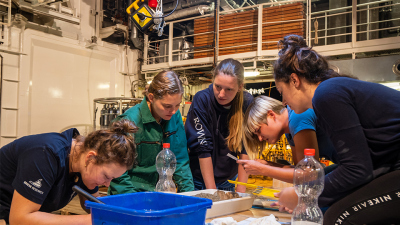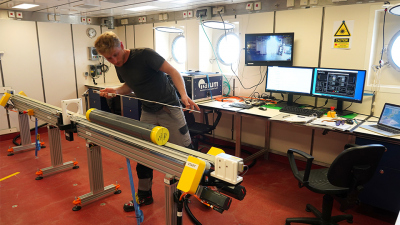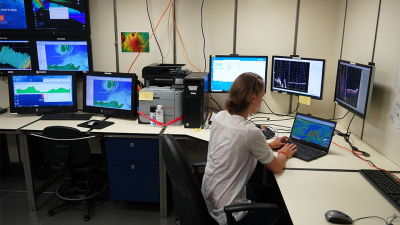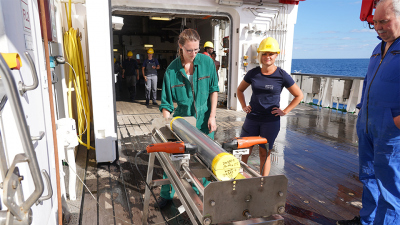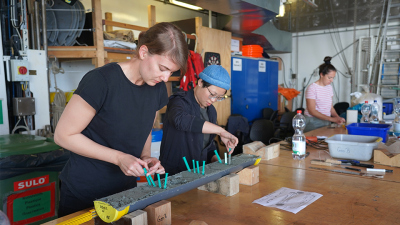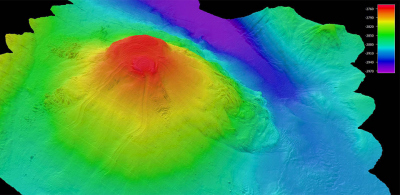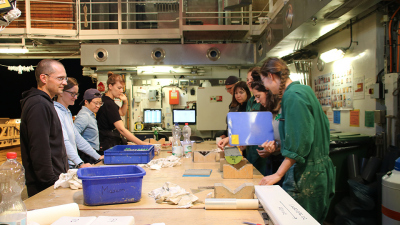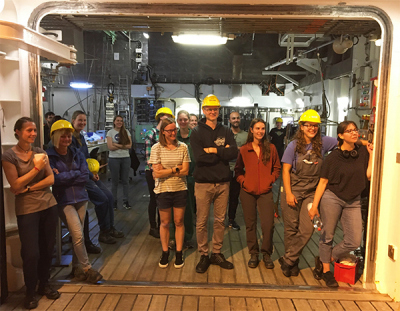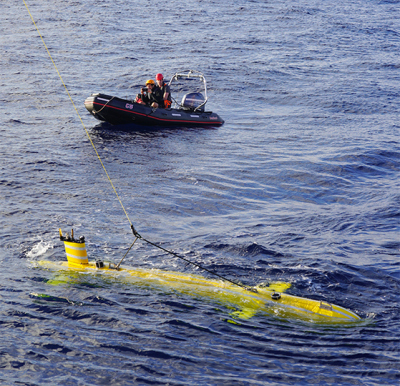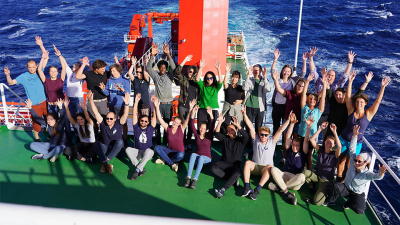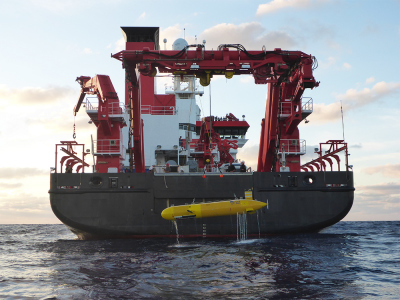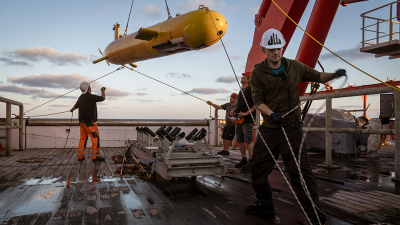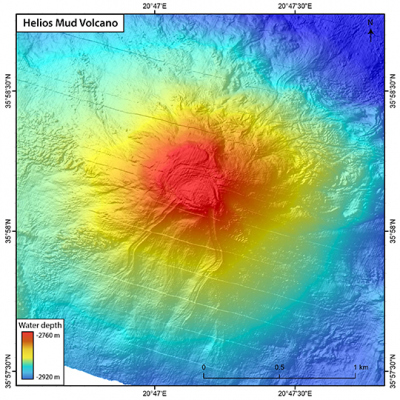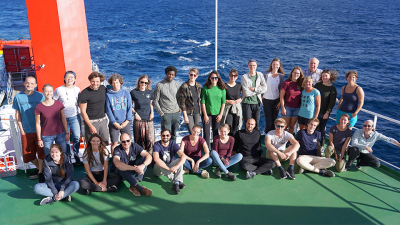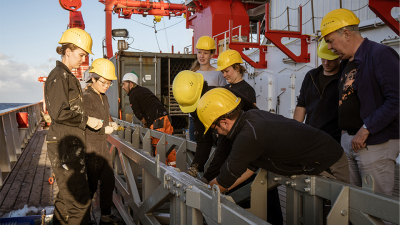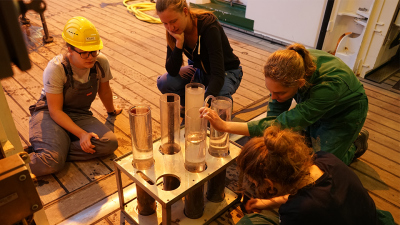- Home
- Discover
- Archive News
- News 2020
- Expedition SO278
Long Mediterranean expedition of the Bremen ocean floor cluster finished
In this collision zone between Africa and Europe, a multitude of mud volcanoes have formed, which transport mud, rocks, gases and fluids from greater depths to the sea floor. Along with magmatic volcanoes, they are the most active structures on the sea floor, responsible for numerous exchange processes with seawater. Of the more than 500 counted mud volcanoes of the eastern Mediterranean, 16 volcanoes in 4 different provinces have been studied. A precise sampling of the mud breccias in the volcanic chimney was possible because in many cases high-resolution maps were previously acquired with the MARUM AUV SEAL. In addition to surveying the seafloor with the echo-sounders of the vessel and the AUV, sediment cores were sampled, direct observations on the seafloor with a TV sled, and profiles for heat transport in the sediments were carried out. A previously unnamed mud volcano, which was surveyed with the AUV and sampled with a gravity corer and multicorer, has been given the name Helios Mud Volcano (Greek for sun) by the researchers. A peculiarity of mud volcanoes in the Mediterranean Sea are interactions with salt deposits under the seabed and so three of the investigated mud volcanoes had up to 7 times higher salt concentrations in the pore water of the mud flow deposits. In the surroundings of the mud volcanoes circular sinkholes were discovered for the first time, which probably developed by dissolution of the underground salts and subsidence of the seabed and do not seem to be a rarity according to the AUV mapping.
Ten of the sampled mud volcanoes showed up to 4-fold depleted concentrations in salinity. These low salinities of the pore water can be explained by the release of water from mineral reactions in very deep layers that dilute the marine pore water. From which depths and from which rock units the pore waters and gases originate are investigated by further analyses of different isotope systems at the Cluster of Excellence of the University of Bremen. The expedition brings back a large collection of very well selected samples, whose analyses and interpretations will keep the researchers intensively occupied in the coming years.
More information about the expedition can be found here in the weekly reports.
In addition, you can find an interview (in German) about the expedition with chief scientist Gerhard Bohrmann here.
